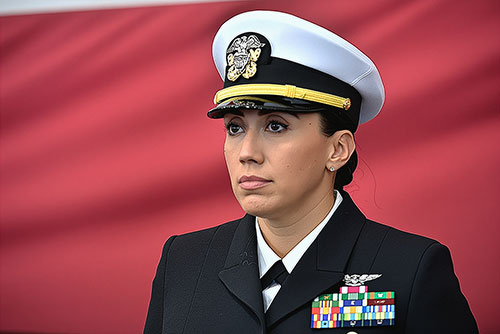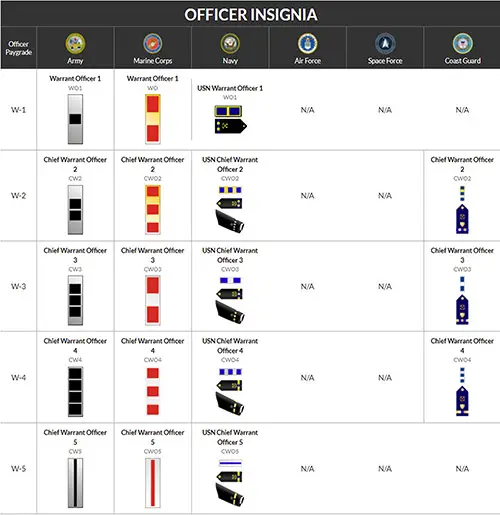📄 U.S. Navy Warrant Officers (WWII–2010)

Point Mugu, Calif. (3 June 2025) – Chief Warrant Officer 3 Monica Neri performs “Side-Boys” honors to welcome the official party during a Change of Command Ceremony for Airborne Command & Control and Logistics Wing (ACCLOGWING), onboard Naval Base Ventura County (NBVC). ACCLOGWING oversees squadrons that operate the E-2C Hawkeye, the E-2D Advanced Hawkeye, and the C-2 Greyhound, ensuring they are manned, trained, and equipped to conduct sustained combat and logistic operations. NBVC is a major shore warfighting platform, providing sustained ready forces to deploy, fight, and win. (U.S. Navy photo by LTJG Drew Verbis, VIRIN: 250603-N-AS200-1016, via DVIDS). | GGA Image ID # 234f9f4393. This image is based on a modified version (resized and upsized) of a U.S. Navy photograph. Attribution Notice.
Introduction
Warrant Officers in the U.S. Navy are highly skilled technical leaders and specialists who fill the critical gap between enlisted personnel and commissioned officers. Their role spans the fleet and shore commands alike—from aviation maintenance to shipboard operations, cyber warfare to nuclear engineering.
This reference guide explains how Navy Warrant Officers have functioned from World War II through the 2010s, with emphasis on appointment methods, responsibilities, and leadership expectations across paygrades CWO1 through CWO5.
🎖️ What Is a Warrant Officer?
- Positioned Between: Enlisted and Commissioned Officer ranks
- Rank Abbreviation: CWO1 through CWO5
- Role: Technical leadership, operational execution, and specialized subject-matter expertise
- Tradition: Dates back to the 1700s; Navy warrant officers were originally shipboard specialists (e.g., gunners, carpenters, sailmakers)
By WWII, Warrant Officers had evolved into the Navy’s most technically adept leaders, handling navigation, communications, engineering, and advanced logistics without requiring full commissioned officer status.
Warrant officers hold warrants from their service secretary and are specialists and experts in certain military technologies or capabilities. The lowest-ranking warrant officers serve under a warrant. Still, they receive commissions from the president upon promotion to Chief Warrant Officer 2. These commissioned warrant officers are direct representatives of the president of the United States. They derive their authority from the same source as commissioned officers, but remain specialists, in contrast to commissioned officers, who are generalists. There are no warrant officers in the Air Force.
📈 Warrant Officer Ranks
| Rank | Abbr. | Typical Duties |
|---|---|---|
| Chief Warrant Officer 1 | CWO1 | Entry-level warrant rank (rare in modern Navy); highly technical role with mentorship from senior CWOs |
| Chief Warrant Officer 2 | CWO2 | Manages small teams; trains enlisted sailors in specialized systems and platforms |
| Chief Warrant Officer 3 | CWO3 | Mid-career technical expert; often holds collateral leadership billets or instructional roles |
| Chief Warrant Officer 4 | CWO4 | Senior technician and command-level advisor; eligible for some command ashore billets |
| Chief Warrant Officer 5 | CWO5 | Strategic-level subject matter expert; rare rank reserved for top leaders across communities |
🚀 Warrant Officer Specialties
Warrant Officers are found in nearly every warfare and support community:
- Engineering Duty Officer (EDO)
- Naval Aviator / Aviation Maintenance Technician (AMT)
- Information Warfare / Cryptologic Technician
- Surface Ordnance Technician
- Nuclear Propulsion Maintenance
- Boatswain / Deck LDO (Limited Duty Officer)
Each community has its own set of rating prerequisites and professional certifications.
📜 Becoming a Navy Warrant Officer
Eligibility Requirements:
- Minimum 8–14 years of service (varies by specialty)
- Top-tier performance evaluations
- Technical rating with career advancement history
- Command endorsement & selection board approval
Program Paths:
- **Warrant Officer 1 (CWO1):** Direct entry in limited communities (e.g., cyber or tech fields)
- **LDO-to-Warrant Transition:** For highly technical LDOs seeking to specialize
US Military Warrant Officers Insignia. Chief Warrant Officers and Warrant Officers Wear Embroidered Corps Devices Above Blue-And-Gold Stripes on Shoulder Marks and Sleeves. Chief Warrant Officers Wear on Both Collar Tips of the Khaki Shirt Silver-Colored Corps Devices of the Same Design as the Corps Devices Used on Sleeves and Shoulder Marks. Warrant Officers Wear the Miniature Pin-On Corps Device in the Same Way and in the Same Design, but Their Pins Are Made of Gold-Colored Metal Instead of Silver. (US Department of Defense, 2022). | GGA Image ID # 1b4be51cf3. Click to View a Larger Image.
🧭 Related Resources
📚 Suggested Citation
You may cite this page in your research using the following formats:
Chicago (17th edition):
Gjenvick-Gjønvik Archives. U.S. Navy Warrant Officers (WWII–2010) – Technical Leadership Roles. Milwaukee, WI: GG Archives, 2000–2025. Accessed 13 September 2025. https://www.ggarchives.com/Military/NavyArchives/Reference/WarrantOfficers.html.
APA (7th edition):
Gjenvick-Gjønvik Archives. (2000–2025). U.S. Navy warrant officers (WWII–2010) – technical leadership roles. GG Archives. Retrieved September 13, 2025, from https://www.ggarchives.com/Military/NavyArchives/Reference/WarrantOfficers.html
MLA (9th edition):
Gjenvick-Gjønvik Archives. U.S. Navy Warrant Officers (WWII–2010) – Technical Leadership Roles. GG Archives, 2000–2025. Web. Accessed 13 Sept. 2025. https://www.ggarchives.com/Military/NavyArchives/Reference/WarrantOfficers.html.

